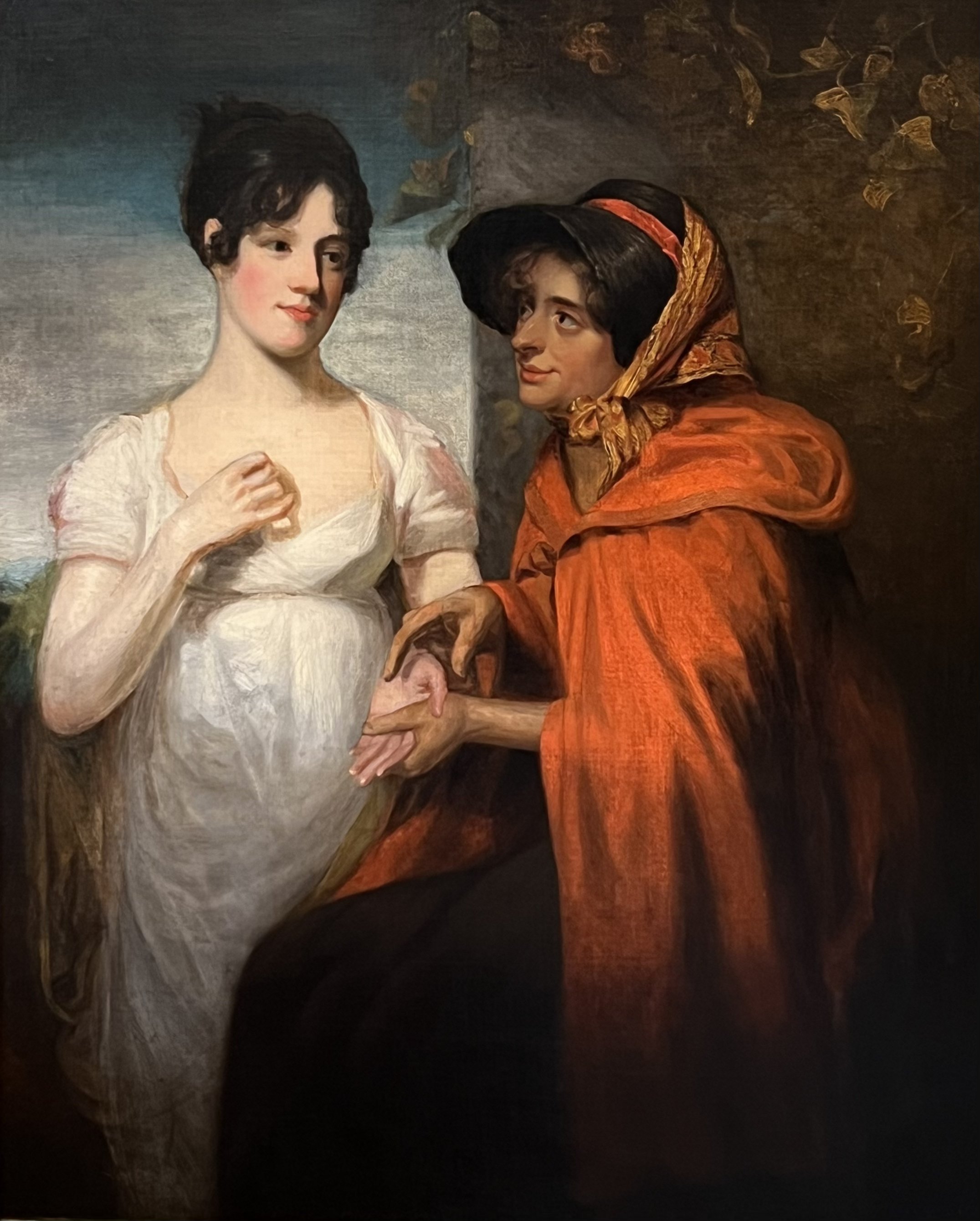
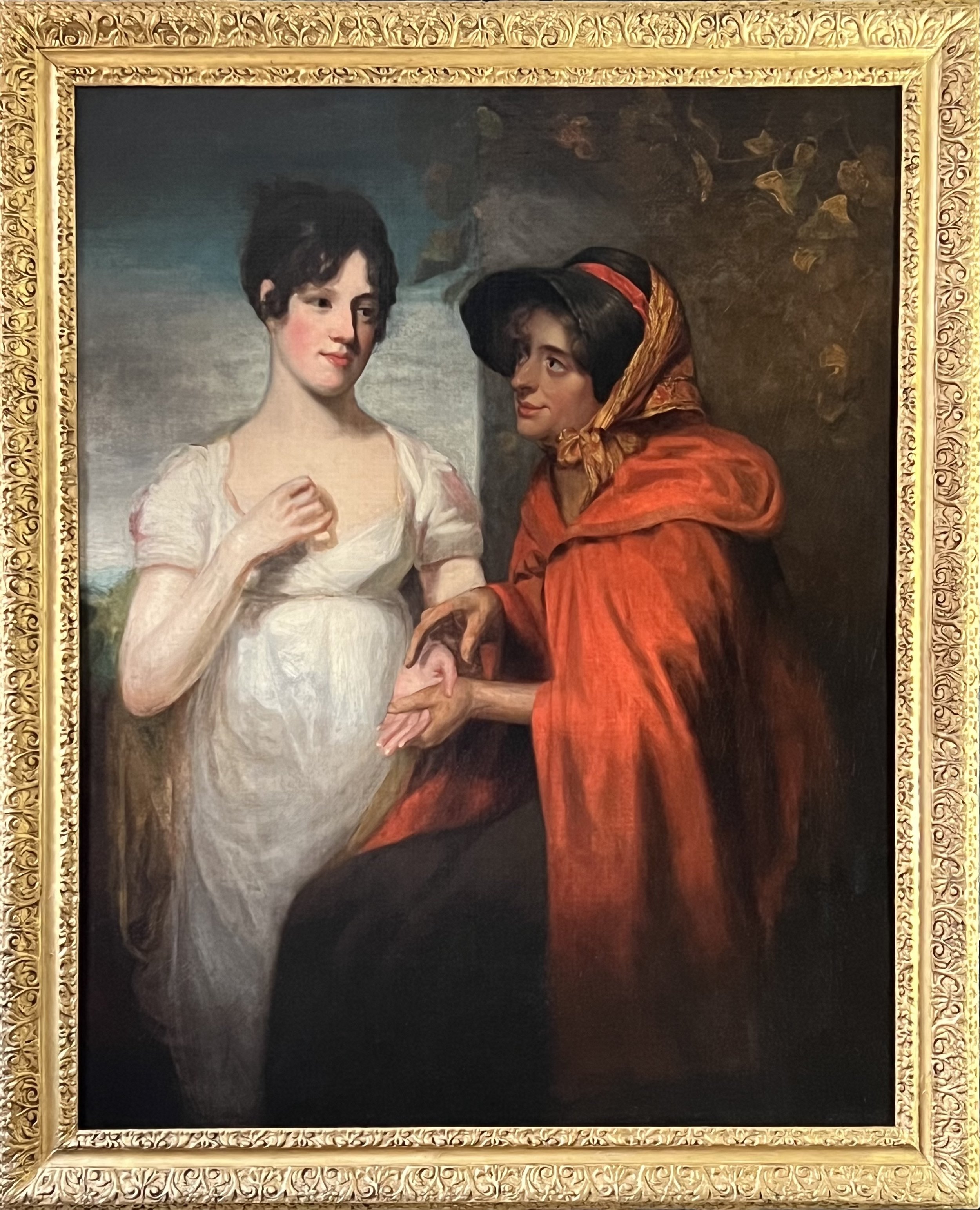

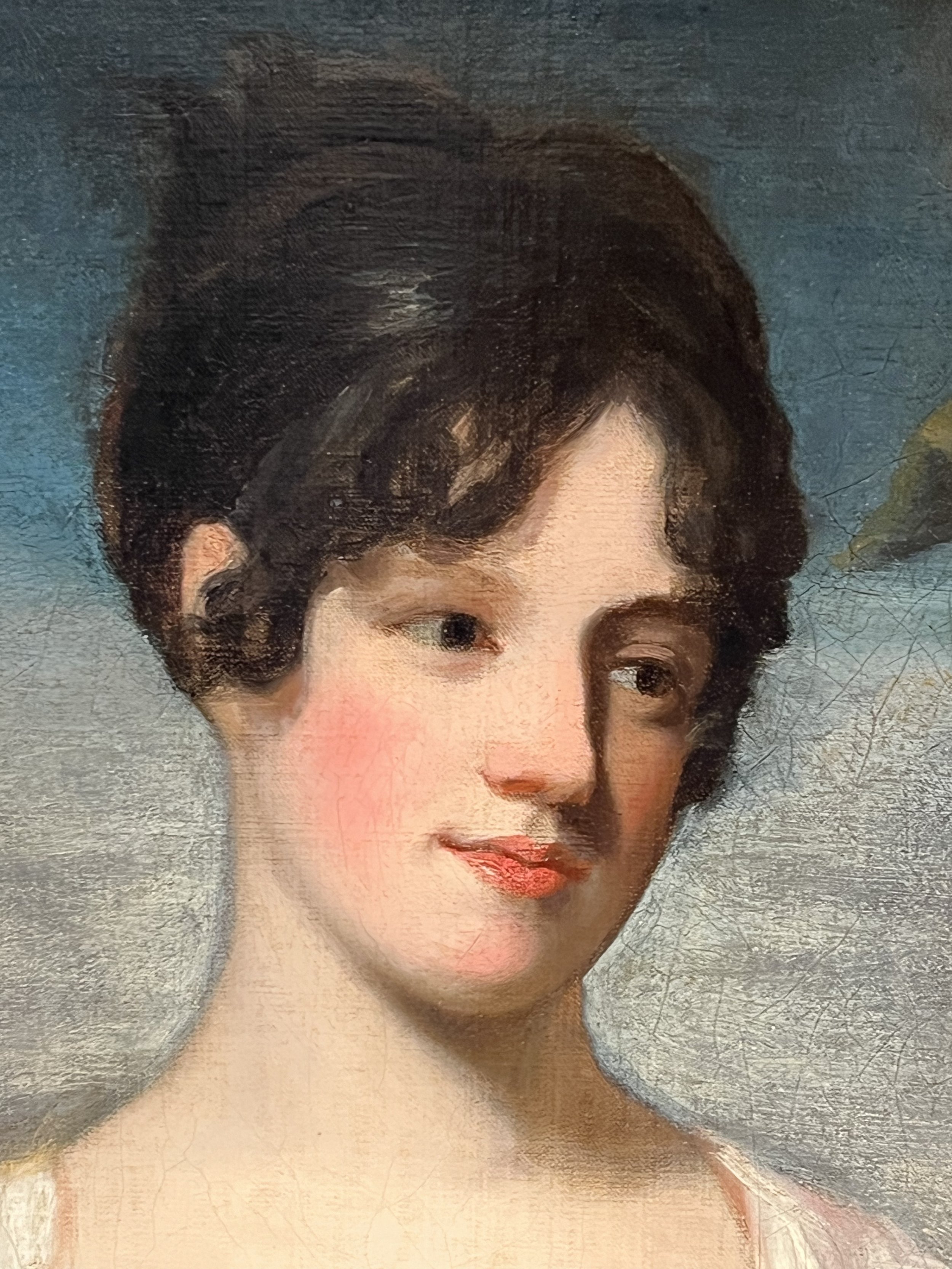



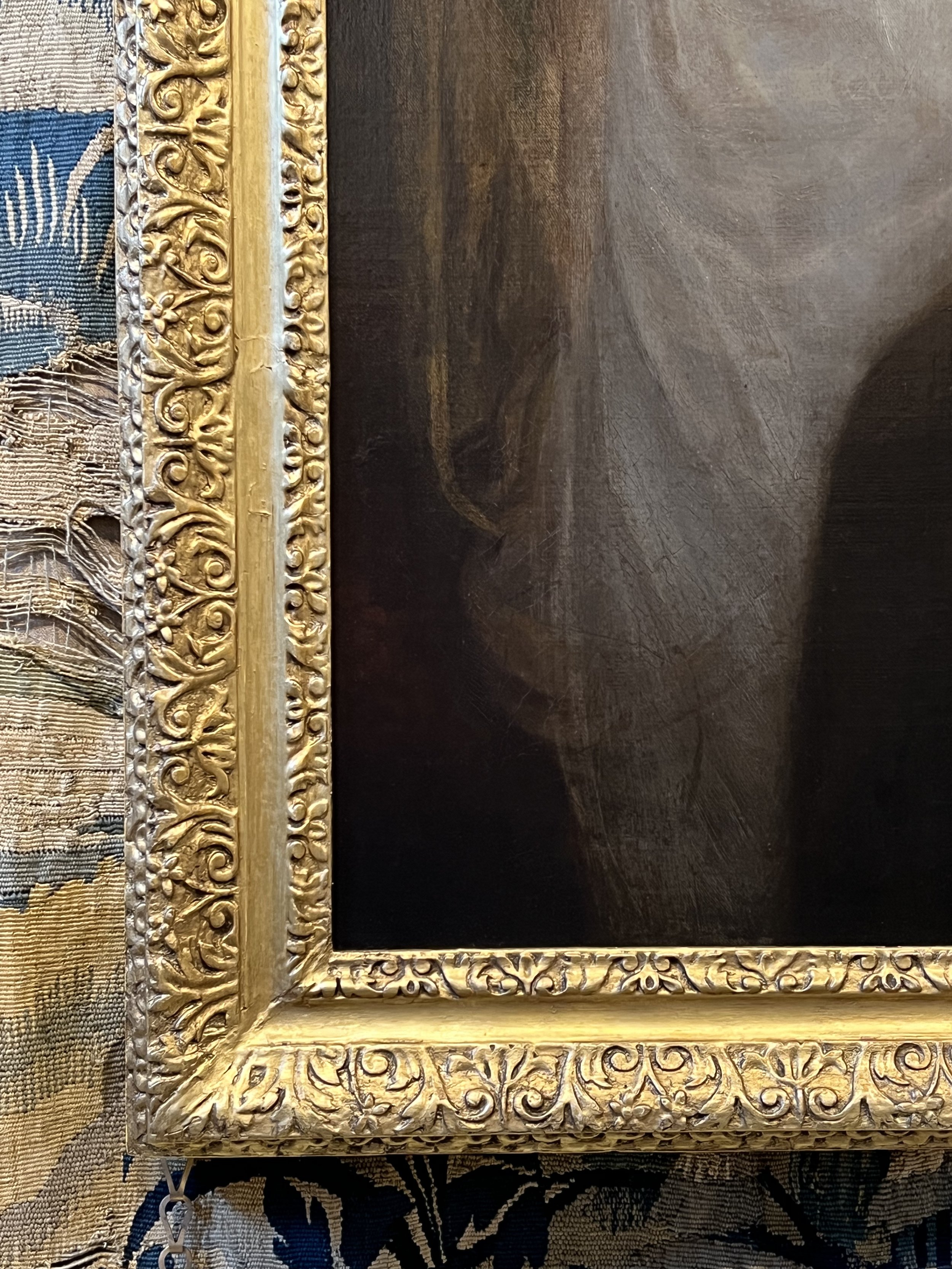
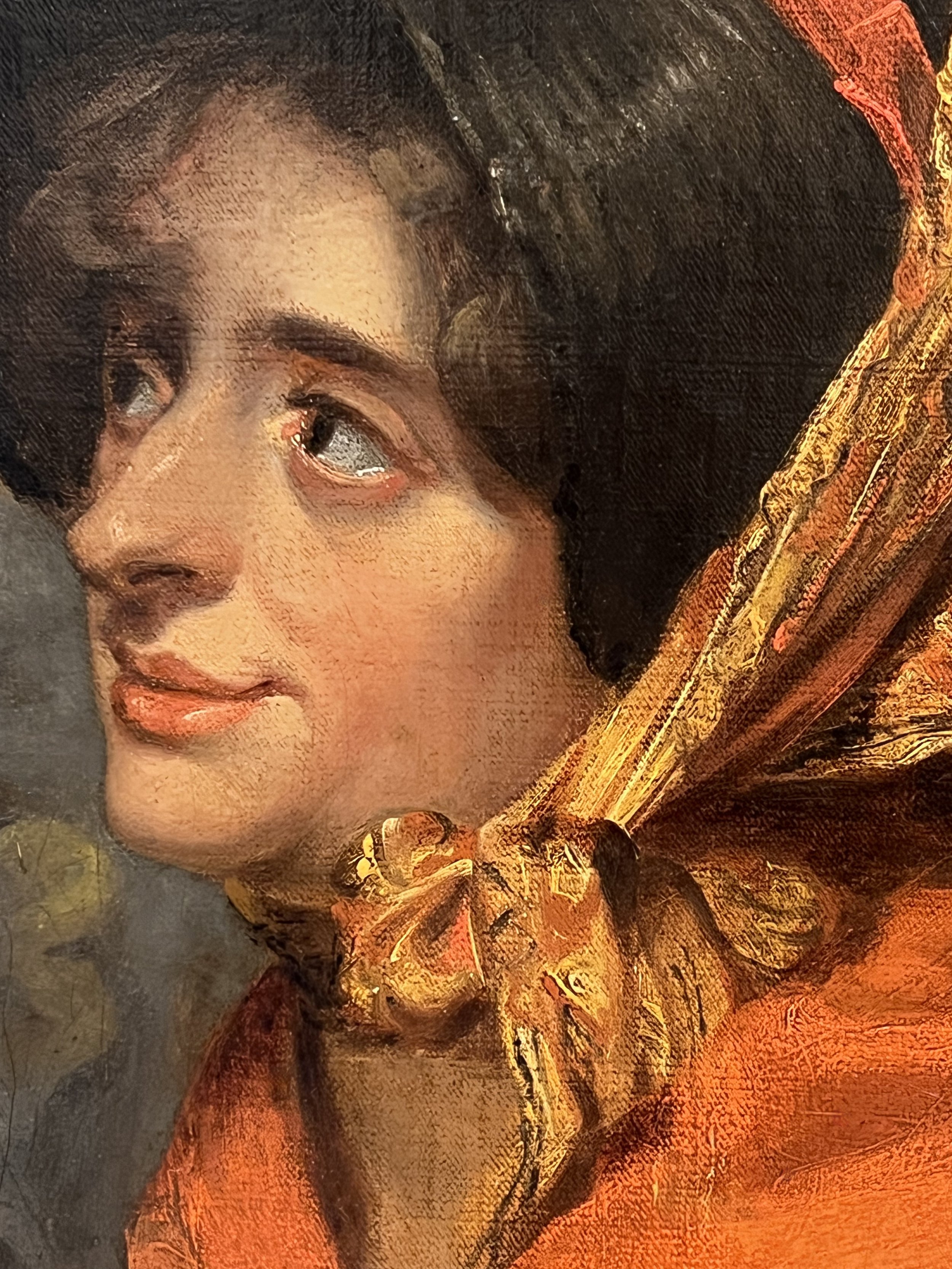
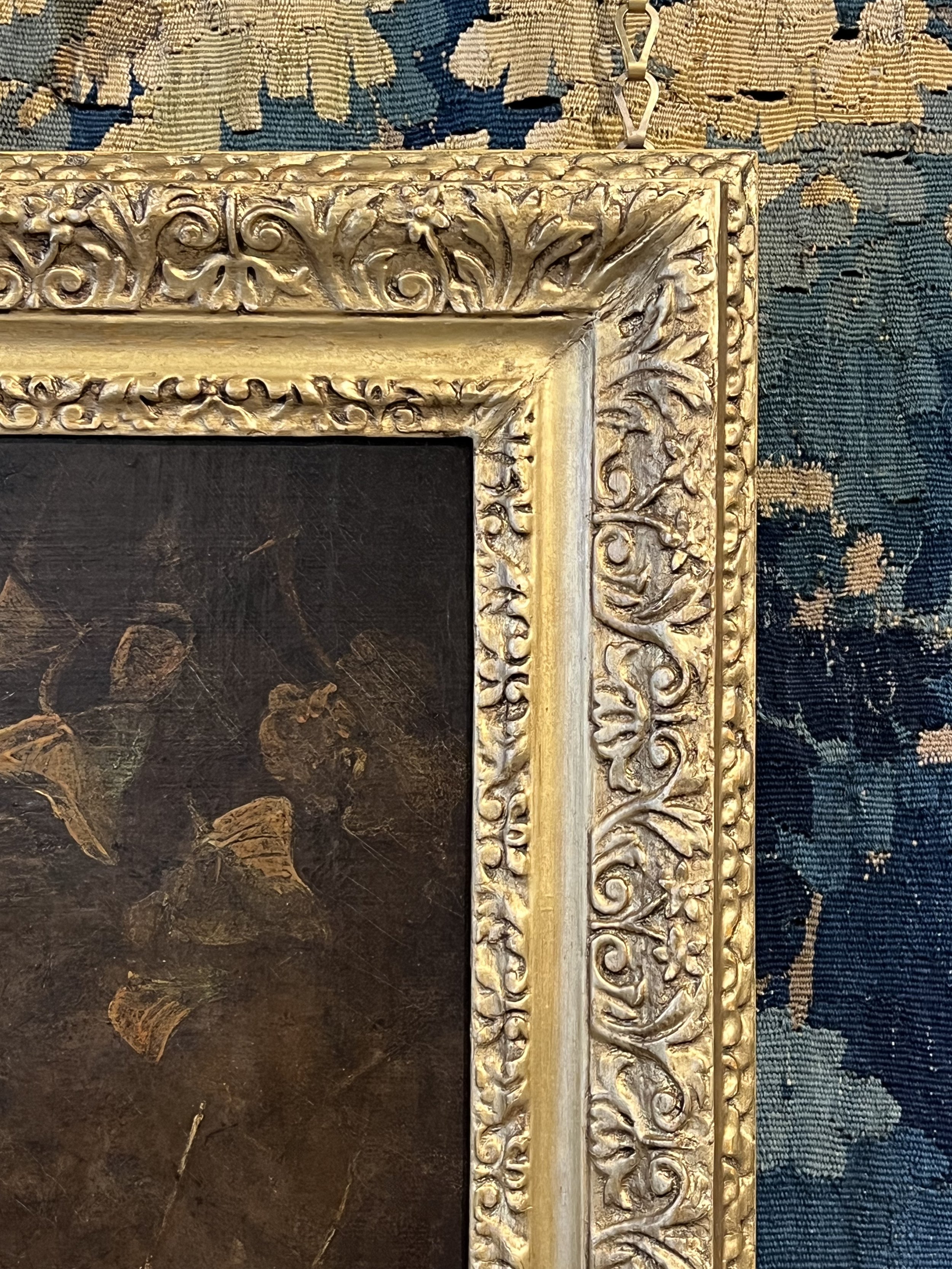
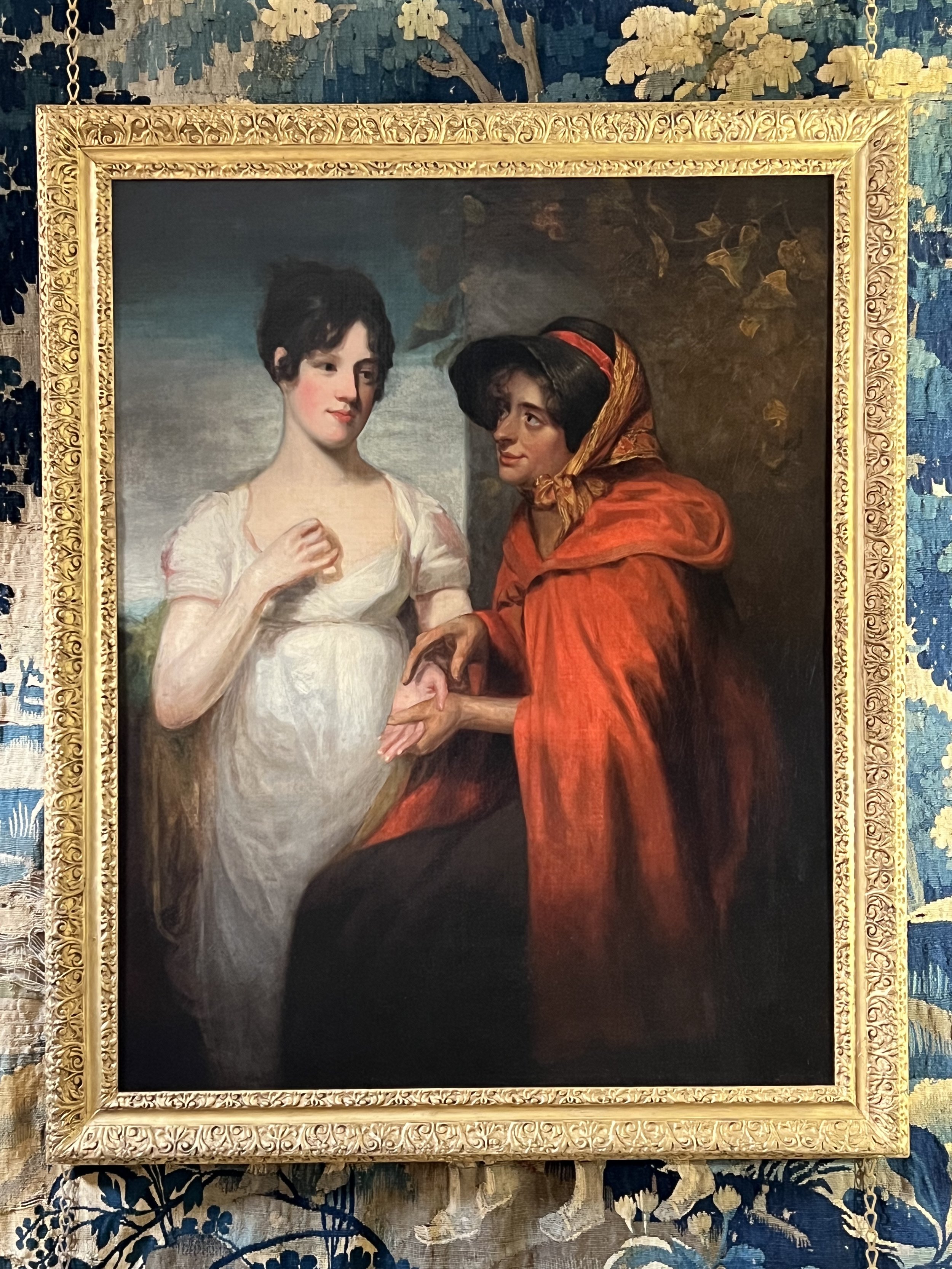
THE FORTUNE TELLER - BY JOHN OPIE R.A ( 1767-1807).
The Fortune Teller a fine late 18th century English oil on canvas subject or ‘fancy picture’ attributed to John Opie R.A (1767-1807)
John Opie (1767-1807) Opie was born the son of a carpenter in a tin-mining district of Cornwall before being discovered as a child prodigy. A self taught artist his natural gifts in drawing were discovered by Dr John Walcot (1738-1819), whose protection and patronage helped to nurture the boy’s gifts before he was brought to London in 1781 where his works caused great sensation. He quickly received the patronage of the Royal Family alongside leading figures of the nobility and cultural elites. Opie was elected an Association of the Royal Academy in 1786 and was made an RA the following year.. He became professor of painting at the Royal Academy in 1805, his lectures being posthumously published in 1809 (prefaced with a memoir by his wife, the novelist and poet Amelia Opie). Although celebrated as a portrait artist Opie was also known for his historical and genre scenes, and the painting we offer here is a case in point. Opie is buried at St. Paul’s near Joshua Reynolds, one of the Academy’s founders.
In Britain, subject pictures or fancy pictures referred to the imagination, or ‘fancy’ and amongst them there are several notable representations of women having their palms read. These paintings often emphasise the material wealth and refinement of an innocent young beauty against the spiritual wealth, sensuality and comparative poverty of the (often Romani) fortune teller.
The fortune tellers dark hair and exotic dress suggest that she is Romani. The Romani (gypsies) had migrated across Europe from their probable origins in India, arriving in northern Europe by about 1420.Their proud independence, nomadic lifestyle, and unusual costumes and customs prompted curiosity and ultimately, a degree of fear and resentment among many settled Europeans. From the fifteenth century onwards, European artists have explored the theme of an often gullible young person having their palm read by a fortune teller, perhaps to know the future of a love affair.
According to custom, gypsies could not enter a home to tell a person’s fortune, so often, readings take place in an outdoor setting such as the one we see here. The theme of the Fortune Teller—hinting at exoticism, sensuality, and a venture into the unknown—offers Opie a perfect opportunity to highlight his skills with drapery and use of chiaroscoro. In fact it was Opie’s abilities in chiaroscuro which is said to have won the praise of Sir Joshua Reynolds, who reputedly described him as ‘like Caravaggio and Velazquez in one.’ This work is a fine example of a rustic fancy picture by the artist with rich Rembrandtesque lighting.
This striking work is available to purchase in its original carved and gilded frame and is an excellent state of conservation.
Provenance: Anonymous Sale Sotheby’s March 1977. The collection of George Verdaguer Gomez Esq until 2024.
Higher resolution images on request. Worldwide shipping available.
Canvas: 256” x 45.5" / 127cm x 102cm. Framed: 50" x 40" / 142cm x 116cm.
Price: £18250

